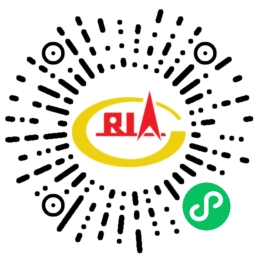1. Production Situation
The research and development of SBC dates back to the middle of 1970s in China. At that time, SBS was the main product. In 2007, the production capacity of Chinese SBC was 260,000 tons, and all the production devices were subordinate to Sinopec Group with the market controlled by Sinopec and the imported products. In May 2008, the establishment and operation of 100,000 tons/year of SBS production devices of Taiwan LCY Chemical Corp. in Huizhou, Guangdong Province broke the solely-leading pattern of Sinopec in the Chinese SBC production field for many years. In the next several years, there were many newly established or expanded SBC production devices completed and put into operation successively. In 2015, the gross production capacity of Chinese SBC reached 1.190 million tons. Thereinto, the production capacity of manufacturers subordinate to Sinopec added up to 450,000 tons/year, accounting for about 37.82% of the gross domestic production capacity; that of CNPC was 80,000 tons/year, accounting for about 6.72% of the gross production capacity; and that of joint ventures and other enterprises was 660,000 tons/year, accounting for about 55.46% of the gross production capacity. Taiwan LCR (Huizhou) Rubber Co., Ltd. is the largest SBC manufacturer in China at present with the production capacity of 300,000 tons/year, accounting for about 25.21% of the gross SBC production capacity in China; following Sinopec Baling Petrochemical Company with the production capacity of 280,000 tons/year, accounting for about 23.53% of the gross production capacity.
With the establishment and operation of many newly established or expanded devices, the product structure of Chinese SBS was also changed from the former overwhelming situation of SBS products to the production of many products including SBS, SIS and SEBS. The SBC manufacturers have formed their respective featured products with efforts. At present, Sinopec Baling Petrochemical Company has formed its own featured products on such aspects as improved material, adhesive and resin modified material by virtue of years of market exploration. With regard to the improved materials, the major linear product is YH791-H at present. With regard to adhesives, main marks are YH792 and YH796. F675, the special shoemaking material of Sinopec Maoming Company and 4452, a congeneric product of Sinopec Beijing Yanshan Company respectively enjoy good reputation in Guangdong and Fujian with stable quality and excellent transparency. After continuous improvement, the special shoemaking material T171 and the improved materials T6303 and T161B of CNPC Dushanzi Company reach the standard of the same products domestically in both performance and quality. LCR (Huizhou) Rubber Co., Ltd. is mainly engaged in the production of shoe materials, Tianjin LG Botian Chemical Co., Ltd. is mainly engaged in the production of the improved materials and adhesive materials, Ningbo Oretel Polymer Co., Ltd. is mainly engaged in the production of SEBS and SIS products, and TSRC (Nantong) Industrial Ltd. specializes in the production of SEBS products. The situation of main Chinese SBC manufacturers in 2015 can be seen in Table 1.
Table1: Situation of Main Chinese SBC Manufacturers in 2015
| Manufacturer | Production Capacity, Ten thousand tons/year | Main products & marks |
| Sinopec Baling Petrochemical Company | 28 | Production of SIS/SBS/SEBS and marks of YH-791-H, YH-791, YH-792, YH-796, YH-788, YH-801, YH-802, YH-803, YH-805, YH-815, improved material 2#, SBS-805E, 815E, TPE-188E and 792E |
| Sinopec Beijing Yanshan Petrochemical Company | 9 |
Production of SBS and marks of 1401、1401-1、4402、4452、1301、 1301-1、1301-3、4303
|
| Sinopec Maoming Petrochemical Ethylene Industrial Company | 8 |
Production of SBS and marks of F-475、F-475A、F-475B、F-675、 F-675B、F-501、F-502、F875
|
| Taiwan LCR (Huizhou) Rubber Co., Ltd. | 30 |
Production of SIS/SBS/SEBS and marks of 3411、3540、1475、3546、 9550、9551、9552、9554,7551,5516、5525、5526、5519
|
| CNPC Dushanzi Petrochemical Company | 8 |
Production of SBS and marks of T171、T172、T6302、T161B
|
| TSRC (Nantong) Industrial Ltd. | 6 |
Production of SIS/SEBS and marks of 6150、6151、6152、6154、6159、
|
| Tianjin LG Botian Chemical Co., Ltd. | 6 | Production of SBS and marks of LG501、LG411、LG501N |
| Ningbo Keyuan Plastic & Rubber Co., Ltd. | 10 | Production of SIS/SBS and marks of 4452H、4412H、1401H、1301H、 SIS1201、KY1320 |
| Ningbo Oretel Polymer Co., Ltd. | 2 | Production of SIS/SEBS and marks of SIS 1201、1221、1222、1251、 1401;SEBS N-7332、N-7331、N-7333、N-7334、N-7335、S-9272、 C-5001 |
| Shandong Gusage Technology Co., Ltd. | 4 | Production of SIS/SBS and marks of SIS1300、1250、1170、1120、 1110、1100T、1100 |
| Maoming Zhonghe Chem-plastic Co., Ltd. | 3 | Production of SBS |
| Liaoning North Dynasol Synthetic Rubber Co., Ltd. | 5 | Production of SBS |
| Total | 119 |
2. Import & Export Situation
In recent years, the import volume of Chinese SBC decreased year by year with the continuous increase of production capacity and output. In 2005, the import volume was 133,100 tons, which dropped to 99,500 tons in 2010 with the year-on-year (similarly hereinafter) decrease of about 21.96%. In 2014, the import volume further dropped to 37,800 tons with the decrease of about 12.30%. The import volume from January to Sep- tember 2015 was 41,100 tons with the growth of about 48.38%.
Meanwhile, a little of Chinese SBC was exported. In 2005, the export volume was 3,000 tons, which substantially increased to 35,300 tons in 2010 and further increased to 48,500 tons in 2011, hitting a historic high with the growth of about 37.39%. The export volume was 22,100 tons in 2014 with the increase of about 84.17%. The export volume from January to September 2015 was 13,800 tons with the decrease of about 24.59%. The import and export situation of Chinese SBC products from 2005 to 2015 can be seen in Table 2.
Table 2: Import & Export Situation of Chinese SBC from 2005 to 2015
| Year | Import | Export | ||
| Import volume/ten thousand tons | Average unit price of import /USD·ton-1 | Export volume/ten thousand tons | Average unit price of export /USD·ton-1 | |
| 2005 |
13.31
|
1552.61 | 0.3 | 1879.77 |
| 2006 | 17.77 | 1687.46 | 0.32 | 2011.72 |
| 2007 | 17.18 | 1715.68 | 0.36 | 2358.6 |
| 2008 | 12.5 |
2047.4
|
0.69 | 2667.35 |
| 2009 | 12.75 |
1818.89
|
0.91 | 2005.14 |
| 2010 | 9.95 | 2295.85 | 3.53 | 2156.12 |
| 2011 | 7.19 | 2894.21 | 4.85 | 2775.69 |
| 2012 | 4.86 | 3028.59 | 1.7 | 2912.15 |
| 2013 | 4.31 | 3061.42 | 1.2 | 2597.83 |
| 2014 | 3.78 | 3101.33 | 2.21 | 2237.48 |
| 2015 | 4.11 | 2411.48 | 1.38 | 1944.83 |
3. Consumption Situation & Development Prospect
With the development of such industries as shoemaking and road construction, the consumption volume of Chinese SBC has increased steadily in recent years. In 2005, the apparent consumption of SBC was 414,000 tons in China, which increased to 664,200 tons in 2010 with the growth of about 13.81%. In 2014, the apparent consumption was about 758,700 tons, which decreased by about 5.88%. The average annual growth rate of the apparent consumption from 2009 to 2014 was about 5.39%. The self-sufficiency rate of the corresponding products was 32.12% in 2005, which increased to 90.33% in 2010 and further increased to 97.93% in 2014. The supply and demand situation of Chinese SBC products from 2005 to 2014 can be seen in Fig. 1.

Fig. 1: Supply & Demand Situation of Chinese SBC Products from 2005 to 2014
The Chinese SBC products are mainly used for making shoes, modification of asphalt, modification of polymer, adhesive and other aspects. The consumption structure in 2014 is listed as follows: the consumption in making shoes accounted for about 33.5% of the aggregate consumption; the asphalt modifier accounted for about 31.5%, the adhesive accounted for about 12.0%, the polymer modifier accounted for about 15.0%, and other aspects accounted for about 8.5%. In the future, such downstream industries as shoemaking, modification of asphalt, adhesive and modification of polymer will still drive the continuous growth of demand for Chinese SBC, but the growth speed will still slow down gradually. It is predicted that the demand volume of Chinese SBC will increase by 3.4% per year averagely by 2019, reaching 900,000 tons or so.
The shoemaking industry will still be the leading consumption field of Chinese SBC. However, since the demand for shoes in international market tends to be stable, the demand for shoes in domestic market will also step into a stable growing period. Besides, in recent years, the material application structure has changed greatly in Chinese shoe-making industry, and more and more TPE substituted for the traditional rubber. Meanwhile, TPE is substituted mutually with the changes of performance and price. In recent years, the consumption of EVA is increased continuously in the shoemaking industry, which also had some negative effect on the consumption of SBC. Thus it can be seen that SBC will be faced with a trend of less and less share in the shoemaking industry gradually. It is predicted that the share in 2019 will decrease to about 29.0%.
China has a vast territory and there is a large development potential in central and western regions. In the future, the mileage of high-grade highways will continuously increase, and the application of SBC modified asphalt will increase continuously. At the same time, because of the fast development of high-grade highways in China in recent years, the highways are in the fastigium of maintenance which will demand for more and more SBC modified asphalt. Though SBS is affected in the field of modified asphalt used for highways by other substitute products such as waste rubber powder, the consumption will continue to increase on the whole and the proportion will increase continuously. Furthermore, the continuous increase of domestic urbanization, affordable housing construction, etc. will drive the consumption of SBC in asphalt waterproof materials used for roofs. It is predicted that Chinese SBC will account for about 37.0% related to the modification of asphalt.
In addition, with the continuous improvement of technical level, SBC will develop fast in the application of polymer modification. In the adhesive field, though there are many competitive products, the market share of SBC in pressure-sensitive adhesive and hot-melt adhesive will further expand because of its nontoxicity and insipidity as well as the simple production procedures of adhesive. Furthermore, the demand for SBC in such fields as painting and printing ink will also expand.
4. Market Price
The market price of Chinese SBC is mainly affected by the raw materials of butadiene and styrene as well as the downstream demand. Taking SBS, a leading variety, as an example, the market price of SBS dry rubber is higher than that of oil-extended rubber generally. As for dry rubber, the market price shows a falling-rising-falling-rising development trend. In January 2014, the price was RMB 14,800 Yuan/ ton, which decreased continuously thereafter. In March, it decreased to RMB 12,800 Yuan/ton, but later it rose to a little extent. In August, the price rose to RMB 15,300 Yuan/ton, and then it fell again, which de- creased to RMB 14,100 Yuan/ton in November. In 2015, the price fell continuously from January to February, and then it rose after March. The market price in June was RMB 14,000 Yuan/ton and RMB 16,300 Yuan/ton in November.
The changee rules of oil-extended rubber are similar to those of dry rubber. The price was RMB 14,100 Yuan/ton in January 2014, which continuously fell thereafter. It decreased to RMB 12,500 Yuan/ ton in April, which rose to some little extent thereafter. In August, the price rose to RMB 14,300 Yuan/ton. However in November, it decreased to RMB 13,500 Yuan/ton. In 2015, it continued to drop from January to February, which began to rise after March. The market price was RMB 1,200 Yuan/ton in June and RMB 12,800 Yuan/ton in November. The main reasons are affected by the downstream demand changes, the price changes of the raw materials butadiene and styrene, and the commencement situation of SBC production devices, namely the supply of products.
Because the growth of demand in the downstream is very slow and the supply is excessive, if the market price of the raw materials butadiene and styrene doesn’t change rapidly, it is predicted that the market price of Chinese SBC will still maintain a relatively low level without great fluctuations in a period in the future.




